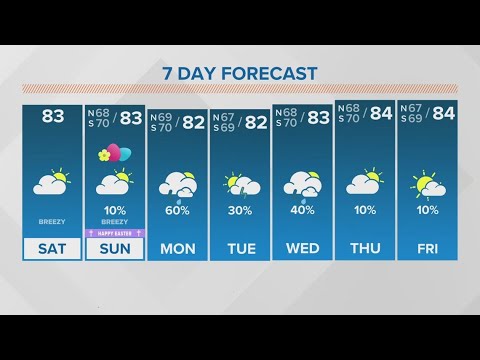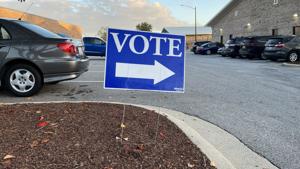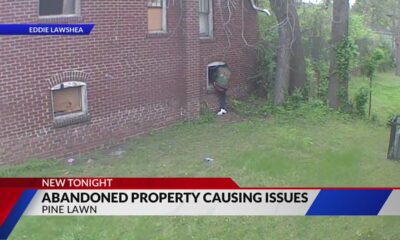News from the South - Louisiana News Feed
Lawsuits multiply against Trump barrage of orders as Democrats struggle to fight back • Louisiana Illuminator

Lawsuits multiply against Trump barrage of orders as Democrats struggle to fight back
by Ashley Murray, Louisiana Illuminator
February 8, 2025
WASHINGTON — Less than three weeks into his second term, President Donald Trump and those working under his auspices — most prominently billionaire Elon Musk — are making no apologies for barreling over institutions and flouting the law.
The Trump administration’s sweeping actions tee up a major test for the guardrails Americans, red or blue, count on — fair application of the law, privacy of tax and benefit information, civil rights in schools, labor laws in the workplace.
Protests led by Democratic lawmakers, former officials and activists have popped up in the nation’s capital and around the U.S. — from Georgia to Maine to Utah, and several other states. Democrats outnumbered in the U.S. House and Senate during the past week have tried to gain attention with tactics like barging into the House speaker’s office and rallying outside agencies.
Senate Democrats gave speeches overnight Wednesday into Thursday objecting to the nomination of Project 2025 architect Russ Vought as director of the Office of Management and Budget. Vought was confirmed on a party-line vote, 53-47.
With opponents unable to deploy more than these limited defenses, and many powerful Republican lawmakers either shrugging or downright agreeing, the federal courts have emerged during the past weeks as the only obstacles to some of Trump’s more provocative moves. That has included the president’s orders to freeze many federal grants and loans, corner federal workers into slap-dash career decisions and outright strip the Constitution of birthright citizenship.
Casey Burgat, a George Washington University legislative affairs professor, said, “Historically, presidents are stopped when members of Congress think they’re going too far.”
“Congress could stop it today, but again, that would take Republicans signing on. The courts are probably the best option, given that Congress seems to be unwilling to do that,” Burgat said.
Republicans indeed cheered Trump along the campaign trail as he promised to stamp out diversity and inclusion, orchestrate mass deportations, maintain tax cuts for corporations, amp up tariffs and close legal immigration pathways.
The majority of Americans backed this campaign pitch. Trump handily won the Electoral College over his Democratic opponent, former Vice President Kamala Harris, and squeaked by with 49.8% of the popular vote. Voters in all seven swing states backed Trump.
That likely will leave it to the third branch of government, the courts, to determine just how much upheaval and constitutional crisis the United States can withstand — though there as well Republicans hold the upper hand, with a 6-3 conservative majority on the Supreme Court.
A legal tracker by the online forum Just Security as of Friday registered 37 lawsuits already lodged against the administration, beginning on Inauguration Day.
Here is a rundown of just some of the executive orders unleashed since Jan. 20 and the legal pushback:
Breaking into Americans’ data
When Trump signed an executive order on his first night in office to establish the so-called Department of Government Efficiency, or DOGE, he aimed to make good on his campaign promise to put the world’s richest man — and major campaign donor — Musk in charge of cutting $2 trillion in federal spending.
DOGE is not an actual department because only Congress, not the executive branch, has the power to create new government agencies. Musk, at the helm of DOGE, was not vetted or confirmed by senators.
Musk is a “special government employee,” according to White House press secretary Karoline Leavitt, who told reporters Feb. 3 that she is “not sure” of Musk’s security clearances. The White House did not respond to States Newsroom follow-up requests for terms of Musk’s special government employee status, signed ethics agreements or financial disclosures.
The White House defended Musk’s actions in a statement, saying DOGE is “fulfilling President Trump’s commitment to making government more accountable, efficient, and, most importantly, restoring proper stewardship of the American taxpayer’s hard-earned dollars. Those leading this mission with Elon Musk are doing so in full compliance with federal law, appropriate security clearances, and as employees of the relevant agencies, not as outside advisors or entities. The ongoing operations of DOGE may be seen as disruptive by those entrenched in the federal bureaucracy, who resist change. While change can be uncomfortable, it is necessary and aligns with the mandate supported by more than 77 million American voters.”
But details of Musk’s far reach across numerous federal agencies are steadily coming to light. Musk and his DOGE appointees gained access to the U.S. Treasury’s central payment system that processes everything from tax returns to Social Security benefits.
Two unions and a retirement advocacy group, together representing millions of Americans, sued Treasury Secretary Scott Bessent, arguing he granted access to Americans’ personal information, including bank account and Social Security numbers, that is protected by federal privacy law.
A federal judge on Thursday ordered the Treasury Department to limit Musk’s access to “read only” status for just two DOGE personnel — Tom Krause, a former tech executive, and software engineer Marko Elez.
Elez resigned Thursday after the Wall Street Journal linked him to a deleted social media account that was brimming with racist statements as recently as the fall of 2024. Elez, 25, worked for Musk at SpaceX and X, according to the publication WIRED, which uncovered that Musk filled DOGE with several engineers barely out of college.
Vice President J.D. Vance advocated on X Friday for Elez’s return to DOGE. Musk agreed: “He will be brought back. To err is human, to forgive divine.” The White House did not immediately respond to States Newsroom on whether Elez will be rehired.
Gutting the feds
Within days after Trump’s inauguration, Musk’s team reportedly asked the Treasury Department to block all funds appropriated for the U.S. Agency for International Development but was denied by a top career official, according to CNN.
Musk’s team broke into the USAID’s Washington, D.C., headquarters over the weekend of Feb. 1 to access agency records. The data security personnel who tried to stop them were subsequently placed on leave.
Musk declared on his platform X: “USAID is a criminal organization. Time for it to die.” Meanwhile, USAID’s X platform disappeared, as did its website.
Congress created the global humanitarian agency in 1961 and appropriated roughly $40 billion for its programs in 2023, according to the Congressional Research Service. The agency’s expenditures hover around 2% of all federal spending.
By Thursday, the New York Times was reporting that the Trump administration planned to keep only 290 of the agency’s approximately 10,000 employees.
Together the American Foreign Service Association and the American Federation of Government Employees on Thursday filed suit against Trump, Bessent, Secretary of State Marco Rubio, and related federal agencies for “unconstitutional and illegal actions” that have “systematically dismantled” USAID.
“These actions have generated a global humanitarian crisis by abruptly halting the crucial work of USAID employees, grantees, and contractors. They have cost thousands of American jobs. And they have imperiled U.S. national security interests,” the plaintiffs wrote in the complaint filed in U.S. District Court in the District of Columbia.
A federal district judge temporarily blocked the USAID layoffs late Friday.
The turmoil at USAID also came amid targeted threats at the Department of Justice.
Federal Bureau of Investigation agents sued Tuesday to keep their identities secret after acting deputy Attorney General Emil Bove — who last year represented Trump in his case against the DOJ — requested records of all agents who were involved in investigating Trump and the Jan. 6, 2021, Capitol attack, according to the Wall Street Journal.
‘Fork in the road’
Employees across nearly every federal agency — now including the intelligence communities — received an email beginning Jan. 28 titled “Fork in the Road.”
The offer, bearing the same subject line as the memo Musk sent to Twitter employees in 2022, contained a “deferred resignation” for federal employees who preferred not to return to the office in-person full-time and abide by new pillars that include being “reliable, loyal, trustworthy.”
The offer promised full pay and benefits until Sept. 30 with hardly any obligation to continue working. Employees were told they had until Feb. 6 to decide.
A federal judge extended the deadline after four large government employee unions sued, arguing the offer is “arbitrary and capricious in numerous respects.”
In just one example, the lawsuit points out, Congress’ temporary funding package for most federal agencies expires March 14, causing questions about whether deferred resignation paychecks are guaranteed.
“I think there’s real uncertainty that they can promise that the money to pay the salaries is actually going to be available,” said Molly Reynolds, an expert in congressional appropriations at the left-leaning Brookings Institution.
Pause on grants and loans
While federal employees wonder about their livelihoods, state and local governments, early childhood schools and numerous social safety net nonprofits were sent into panic when the Trump administration announced it planned to freeze trillions in federal grants and loans.
The Jan. 27 memo from the OMB set off widespread confusion over which programs would face the cut, including questions over whether millions could lose services through community health centers, Head Start, low-income home heating assistance funds — and anything else for which Congress has appropriated funds, for example, small business loans.
A federal judge in Rhode Island blocked the order on Jan. 31, making clear that a law on the books since 1974 gives the president a legal pathway to ask Congress to rescind funds that have already been allocated and signed into law.
“Here, there is no evidence that the Executive has followed the law by notifying Congress and thereby effectuating a potentially legally permitted so-called ‘pause,’” Chief Judge John J. McConnell Jr. of the U.S. District Court in Rhode Island wrote in the 13-page ruling.
Article 1 of the Constitution gives Congress the “power of the purse,” and the 1974 Impoundment Control Act governs how the executive branch can challenge funding.
Trump’s newly installed OMB director, Vought, has repeatedly argued the 1974 law is unconstitutional.
Reynolds told States Newsroom that power of the purse is the “biggest remaining sort of bulwark of congressional power and congressional authority.”
“In addition to a number of these things being potentially illegal on an individual level, overall, we’re just in this world where, depending on how things unfold, we are in for a really profound rebalancing of power between Congress and the presidency,” Reynolds said.
Another stab at the Constitution
As Trump’s second Inauguration Day stretched into the evening, he signed a flurry of immigration-related executive orders and some are already facing legal challenges.
The president’s order to end the constitutional right of citizenship under the 14th Amendment by redefining birthright citizenship has been met with a nationwide injunction.
“Today, virtually every baby born on U.S. soil is a U.S. citizen upon birth. That is the law and tradition of our country. That law and tradition are and will remain the status quo pending the resolution of this case,” wrote Judge Deborah L. Boardman of the U.S. District Court for the District of Maryland.
House Republicans, separately, introduced a bill to end birthright citizenship, and welcomed legal challenges to the measure in the hopes that it heads to the Supreme Court, where Trump has picked three of the six conservative justices.
Another executive order, which declared an “invasion” at the southern border and has effectively shut down the ability for immigrants without legal status to claim asylum, is being challenged in a major lawsuit by the American Civil Liberties Union.
Can the president root out diversity?
Since Inauguration Day, Trump has issued several orders aimed at limiting options at school, work and the doctor’s office for particular groups of Americans.
He campaigned on a vision to “save American education,” and end DEI and “gender ideology extremism.”
Not even 24 hours after the first major tragedy of his presidency — the Jan. 29 midair collision between an Army helicopter and commercial airliner — Trump pointed his finger at diversity, equity and inclusion as the cause. The president blamed the deadly crash at Ronald Reagan Washington National Airport that killed 67 on diversity hires, singling out people with disabilities.
On Feb. 5 he issued an executive order that bars transgender athletes from competing on women’s sports teams consistent with their gender identity. The effort — which aims to deny federal funds for schools that do not comply — is sure to face legal challenges.
Other orders are already facing lawsuits.
Trump’s pledge to “keep men out of women’s sports” reflects only part of his broader anti-trans agenda. He took significant steps in January via executive orders to prohibit openly transgender service members from the U.S. military and restrict access to gender-affirming care for kids.
Washington state Attorney General Nick Brown sued the Trump administration Feb. 7 for its late January order that cuts federal funding to hospitals or medical schools that provide gender-related care for transgender children and young adults that the order defines as age 19 and under.
Trump is also facing multiple lawsuits from active U.S. troops, and those seeking to join, over an order banning openly transgender people from serving in the U.S. military.
Per Trump’s order on Jan. 27, “[A]doption of a gender identity inconsistent with an individual’s sex conflicts with a soldier’s commitment to an honorable, truthful, and disciplined lifestyle, even in one’s personal life.”
Six transgender service members argued in a complaint filed Jan. 28 that Trump’s order “invokes no study of the effectiveness of transgender service members over the past four years, of their ability to serve, or of their integrity and selflessness in volunteering to serve their country, and the directive’s stated rationale is refuted by substantial research and testimony, as well as by years of capable and honorable service by transgender service members without issue.”
Ariana Figueroa, Jennifer Shutt and Shauneen Miranda contributed to this report.
Last updated 4:51 p.m., Feb. 7, 2025
Louisiana Illuminator is part of States Newsroom, a nonprofit news network supported by grants and a coalition of donors as a 501c(3) public charity. Louisiana Illuminator maintains editorial independence. Contact Editor Greg LaRose for questions: info@lailluminator.com.
News from the South - Louisiana News Feed
Professor Carl Nivale’s Easter Parade Report

SUMMARY: Professor Carl Nivale provided a preview of the Easter parades in the French Quarter on April 20th. The historic French Quarter Easter Parade, founded in 1956, starts at 9:45 AM and features ladies in Easter bonnets riding in horse-drawn carriages. The 40th Annual French Quarter Easter Parade follows at 1:00 PM, honoring the late Eric Pollson, with notable riders like Malik Mingo and Meg Ferris. The official Gay Easter Parade begins at 4:30 PM, celebrating its 24th year with colorful costumes and miniature floats. For real-time updates, Professor Nivale encourages using the WWL Parade Tracker app.

The French Quarter Easter Parade and Gay Easter Parade both roll on Sunday, bringing festive fashion, floats, and music to the heart of New Orleans.
News from the South - Louisiana News Feed
One state framed wetlands as a flooding solution. Could it work elsewhere?

by Madeline Heim and Caitlin Looby, Milwaukee Journal Sentinel, Louisiana Illuminator
April 19, 2025
ASHLAND, Wis. — In less than 10 years, three catastrophic floods ravaged northwestern Wisconsin and changed the way people think about water.
The most severe, in July 2016, slammed Ashland with up to 10 inches of rain in less than a day — a month’s worth of rain fell in just two hours. As rivers swelled to record highs, major highways broke into pieces and culverts washed away. It took months for roads to reopen, with more than $41 million in damage across seven counties.
The Marengo River, which winds through forests and farmland before meeting the Bad River that flows into Lake Superior, was hit hard during these historic deluges. Centuries earlier, the upper watershed would have held onto that water, but logging and agriculture left the river disconnected from its floodplain, giving the water nowhere safe to go.
Today, the Marengo River stands as an example of a new kind of solution. Following the record floods, state leaders invested in opening up floodplains and restoring wetlands to relieve flooding. As the need to adapt to disasters grows more urgent, the Marengo River serves as an example that there’s a cheaper way to do so: using wetlands.
“We can’t change the weather or the patterns… but we can better prepare ourselves,” said MaryJo Gingras, Ashland County’s conservationist.
Wetlands once provided more natural flood storage across Wisconsin and the Mississippi River Basin, soaking up water like sponges so it couldn’t rush further downstream. But about half of the country’s wetlands have been drained and filled for agriculture and development, and they continue to be destroyed, even as climate change intensifies floods.
As the federal government disposes of rules to protect wetlands, environmental advocates want to rewrite the ecosystem’s narrative to convince more people that restoration is worth it.
Wetlands aren’t just pretty places, advocates argue, but also powerhouses that can save communities money by blunting the impact of flood disasters. A 2024 Wisconsin law geared at preventing such disasters before they happen, inspired by the wetland work in the Marengo River watershed, is going to test that theory.
“Traditionally, the outreach has been, ‘We want to have wetlands out here because they’re good for ducks, frogs and pretty flowers,’” said Tracy Hames, executive director of the Wisconsin Wetlands Association. “What do people care about here? They care about their roads, their bridges, their culverts … how can wetlands help that?”
Bipartisan bill posed wetlands as flood solution
Northern Wisconsin isn’t the only place paying the price for floods. Between 1980 and 2025, the U.S. was struck by 45 billion-dollar flood disasters, according to the National Oceanic and Atmospheric Administration, with a cumulative price tag of nearly $206 billion. Many parts of the vast Mississippi River Basin receive up to eight inches more rain annually than they did 50 years ago, according to a 2022 analysis from Climate Central, a nonprofit organization that analyzes climate science.
Damaging floods are now so common in the states that border the Mississippi River, including Wisconsin, that the issue can’t be ignored, said Haley Gentry, assistant director of the Tulane Institute on Water Resources Law and Policy in New Orleans.
“Even if you don’t agree with certain (regulations) … we absolutely have to find ways to reduce damage,” Gentry said.
Former Wisconsin state Rep. Loren Oldenburg, a Republican who served a flood-prone district in southwest Wisconsin until he lost the seat last year, was interested in how wetlands could help.
Oldenburg joined forces with Republican state Sen. Romaine Quinn, who represents northern Wisconsin and knew of the work in the Marengo River watershed. The lawmakers proposed a grant program for flood-stricken communities to better understand why and where they flood and restore wetlands in areas that need the help most.
Jennifer Western Hauser, policy liaison at the Wisconsin Wetlands Association, met with Democratic and Republican lawmakers to advocate for the bill. She emphasized problems that might get their attention — related to transportation, emergency services, insurance, or conservation — that wetland restoration could solve. She said she got a lot of head-nods as she explained that the cost of continually fixing a washed-out culvert could vanish from storing and slowing floodwaters upstream.
“These are issues that hit all over,” she said. “It’s a relatable problem.”
(MaryJo Gingras/Ashland County Land & Water Conservation Dept.)
The bill passed unanimously and was signed into law by Democratic Gov. Tony Evers in April 2024. Evers and the Republican-controlled Legislature approved $2 million for the program in the state’s most recent budget.
Twenty-three communities applied for the first round of grant funding, which offered two types of grants — one to help assess flood risk, and another grant to help build new wetlands to reduce that risk. Eleven communities were funded, touching most corners of the state, according to Wisconsin Emergency Management, which administered the grants.
Brian Vigue, freshwater policy director for Audubon Great Lakes, said the program shows Wisconsinites have come a long way in how they think about wetlands since 2018, when the state government made it easier for developers to build in them.
There’s an assumption that wetland restoration comes only at the expense of historically lucrative land uses like agriculture or industry, making it hard to gain ground, Vigue said. But when skeptics understand the possible economic benefits, it can change things.
“When you actually find something with the return on investment and can prove that it’s providing these benefits … we were surprised at how readily people that you’d assume wouldn’t embrace a really good, proactive wetland conservation policy, did,” he said.
Private landowners need to see results
About three-quarters of the remaining wetlands in the lower 48 states are on privately owned land, including areas that were targeted for restoration in the Marengo River watershed. That means before any restoration work begins, the landowner must be convinced that the work will help, not hurt them.
For projects like this to work, landowner goals are a priority, said Kyle Magyera, local government outreach specialist at the Wisconsin Wetlands Association, because “they know their property better than anyone else.”
Farmers, for example, can be leery that beefing up wetlands will take land out of production and hurt their bottom line, Magyera said.
In the Marengo watershed, Gingras worked with one landowner who had farmland that wasn’t being used. They created five new wetlands across 10 acres that have already decreased sediment and phosphorus runoff from entering the river. And while there hasn’t been a flood event yet, Gingras expects the water flows to be slowed substantially.
This work goes beyond restoring wetland habitat, Magyera said, it’s about reconnecting waterways. In another project, Magyera worked on a private property where floods carved a new channel in a ravine that funneled the water faster downstream. The property now has log structures that mimic beaver dams to help slow water down and reconnect these systems.
(Mark Hoffman/Milwaukee Journal Sentinel)
Now that the first round of funding has been disbursed in Wisconsin’s grant program, grantees across the state are starting work on their own versions of natural flood control, like that used in Marengo.
In Emilie Park, along the flood-prone East River in Green Bay, a project funded by the program will create 11 acres of new wetlands. That habitat will help store water and serve as an eco-park where community members can stroll through the wetland on boardwalks.
In rural Dane County, about 20 miles from the state capital, a stretch of Black Earth Creek will be reconnected to its floodplain, restoring five and a half acres of wetlands and giving the creek more room to spread out and reduce flood risk. The creek jumped its banks during a near record-breaking 2018 rainstorm, washing out two bridges and causing millions of dollars in damage.
Voluntary program could be of interest elsewhere
Nature-based solutions to flooding have been gaining popularity along the Mississippi River. Wisconsin’s program could serve as a “national model” for how to use wetlands to promote natural flood resilience, Quinn wrote in a 2023 newspaper editorial supporting the bill.
Kyle Rorah, regional director of public policy for the Great Lakes/Atlantic region of Ducks Unlimited, said he’s talking about the Wisconsin grant program to lawmakers in other states in the upper Midwest, and that he sees more appetite for this model than relying on the federal government to protect wetlands.
And Vigue has found that stakeholders in industries like fishing, shipping and recreation are receptive to using wetlands as infrastructure.
But Gentry cautioned that voluntary restoration can only go so far, because it “still allows status-quo development and other related patterns to continue.”
Still, as the federal government backs off of regulation, Gentry said she expects more emphasis on the economic value of wetlands to drive protection.
Some of that is already happening. A 2024 analysis from the Union of Concerned Scientists found that wetlands save Wisconsin and the upper Midwest nearly $23 billion a year that otherwise would be spent combating flooding.
“Every level of government is looking at ways to reduce costs so it doesn’t increase taxes for their constituents,” Gingras said.
John Sabo, director of the ByWater Institute at Tulane University, said as wetlands prove their economic value in reducing flood damage costs, taxpayers will see their value.
“You have to think about (wetlands) as providing services for people,” Sabo said, “if you want to get people on the other side of the aisle behind the idea (of restoring them).”
And although the Wisconsin grant program is small-scale for now, he said if other states bordering the Mississippi River follow its lead, it could reduce flooding across the region.
“If all upstream states start to build upstream wetlands,” he said, “that has downstream impacts.”
YOU MAKE OUR WORK POSSIBLE.
Louisiana Illuminator is part of States Newsroom, a nonprofit news network supported by grants and a coalition of donors as a 501c(3) public charity. Louisiana Illuminator maintains editorial independence. Contact Editor Greg LaRose for questions: info@lailluminator.com.
The post One state framed wetlands as a flooding solution. Could it work elsewhere? appeared first on lailluminator.com
News from the South - Louisiana News Feed
Easter Weekend: Muggy, warm, and windy

SUMMARY: Easter Weekend will be warm, muggy, and breezy, with mostly cloudy skies and temperatures in the low 80s. Current conditions are in the low 70s, making it a sticky day for events like the Crescent City Classic. While there’s a slight chance of rain on Sunday, most of the day will remain dry. Winds from the southeast could gust near 30 mph. Next week, a front will bring increased rain chances and storms starting Monday, with unsettled conditions continuing into Tuesday and Wednesday. Despite this, warm temperatures in the 80s will persist throughout the week.

Easter Weekend looks very nice! It will be hot, humid, and windy with high temperatures in the lower 80s both afternoons. More clouds will be around with some breaks
-

 News from the South - Alabama News Feed6 days ago
News from the South - Alabama News Feed6 days agoFoley man wins Race to the Finish as Kyle Larson gets first win of 2025 Xfinity Series at Bristol
-

 News from the South - Alabama News Feed6 days ago
News from the South - Alabama News Feed6 days agoFederal appeals court upholds ruling against Alabama panhandling laws
-

 News from the South - North Carolina News Feed5 days ago
News from the South - North Carolina News Feed5 days agoFDA warns about fake Ozempic, how to spot it
-

 News from the South - Oklahoma News Feed3 days ago
News from the South - Oklahoma News Feed3 days agoThursday April 17, 2025 TIMELINE: Severe storms Friday
-

 News from the South - Virginia News Feed4 days ago
News from the South - Virginia News Feed4 days agoLieutenant governor race heats up with early fundraising surge | Virginia
-

 News from the South - Missouri News Feed5 days ago
News from the South - Missouri News Feed5 days agoAbandoned property causing issues in Pine Lawn, neighbor demands action
-

 News from the South - Arkansas News Feed6 days ago
News from the South - Arkansas News Feed6 days agoTwo dead, 9 injured after shooting at Conway park | What we know
-

 News from the South - Missouri News Feed3 days ago
News from the South - Missouri News Feed3 days agoDrivers brace for upcoming I-70 construction, slowdowns












































